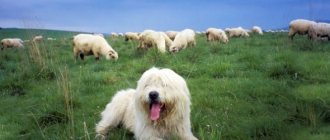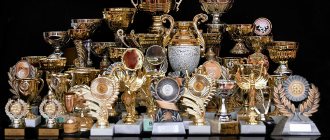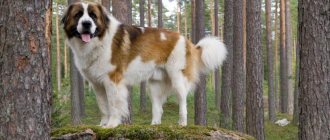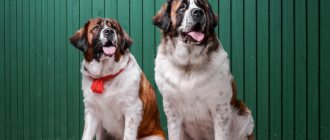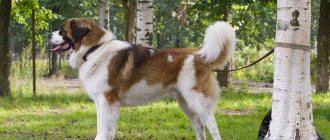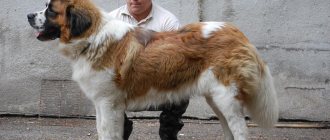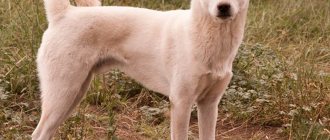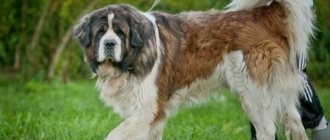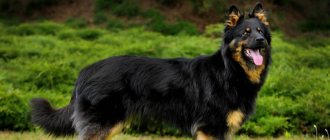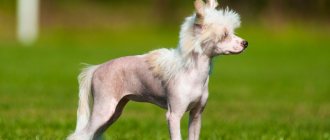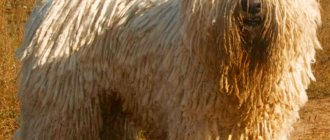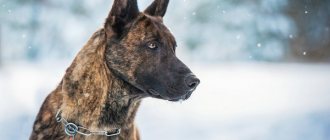An absolutely unique animal. This is not said for the sake of saying something nice. The dog is distinguished by good health and a stern character.
The shepherd dog is a primitive breed. Primitive in the sense that it was practically not affected by selection changes. The animal is little known outside its homeland. In Bulgaria she has no equal in terms of working qualities.
Care and maintenance
You cannot keep such a pet in an apartment.
It is absolutely not urban. The dog does not know how to be lazy, lying on the sofa or on the rug, it is difficult for him to live without work. In the apartment he will feel like in a cage. But it is undesirable to put him on a chain, he can literally go brutal. It is best to keep him in a private house behind a fence, where he can move freely. Does not require special care, requiring only standard attention for dogs with medium coat. Brushing twice a week
Dogs don't smell or get particularly dirty, so there's no reason to bathe them often. Of course, the teeth, ears and eyes require attention. All this must be periodically cleaned and washed.
The dog must have its own place to rest and at least two bowls - for food and for water
It is important that from childhood he understands that he should not sleep on the master’s sofa. Dogs love to swim in a river or other body of water, in the summer let him swim in the water
In winter, you can rub your pet with snow. The dog needs daily walks for at least an hour.
Breed diseases:
- Hypothyroidism (thyroid disease);
- inversion of eyelids;
- Spinal injuries;
- Skin diseases.
A problem that is not alien to galangals is decreased immunity. And one more very important information. If your dog unexpectedly requires surgery under general anesthesia, please do a medication test first. Many Kangals cannot tolerate anesthesia.
Description of the breed
Bulgarian Shepherds are not yet recognized by the FCI (Fédération Cynologique Internationale), but a breed standard was adopted in 2005. The impressive size of the animal speaks of great strength. The shepherd's body is muscular, its back is straight, its chest is wide, its paws are straight and strong. The shape of the body tends to be square. Dimensions of adults:
- height 58 – 65 cm at the withers;
- weight 45 – 55 kg.
The head is massive, the forehead is wide. The nose is black or dark red. The eyes are almond-shaped, set close to each other. The color of the iris in red and brown individuals is amber.
The bite is correct, scissor-shaped. The ears are small, triangle-shaped, and set low. Among Bulgarians, it is customary to crop one ear of an animal to make it easier to determine the sex; a female dog’s right ear is shortened, and a dog’s left ear is shortened. The neck of the Karachan is powerful and muscular; the presence of skin folds is not allowed. The tail is fluffy, medium in size, set high, and does not curl into a ring.
The coat of representatives of the breed is long (at least 7-8 cm), hard, and has a thick and dense undercoat. The color of shepherd dogs is quite varied; a combination of 2 and 3 shades is often found. The spots must have clear outlines and contrast with the main color. The most common color is black and white.
Character
The Bulgarian Shepherd has a calm and balanced character. These are calm, even aristocratic animals. Most often, the dog can be observed calmly lying on a hill, from where a view of the entire territory opens, and as if dozing. In fact, Karachan is carefully observing the situation. While everything is calm, the dog is relaxed and does not show itself in any way. As soon as the dog notices the danger, all serenity instantly disappears, a menacing booming roar warns the enemy about the guard.
Attitude towards children
Bulgarian Shepherds are indifferent to children; they will not happily play with children, run after a stick or chase a ball. An adult dog will not offend a child; he will simply leave if the child, having played out, begins to cause concern to the dog. But the puppy is not very patient and may bite the child in response to tugging on the tail or ears. Dog owners should take this feature into account and not leave the puppy alone with children.
Relationships with other animals
The Bulgarian Shepherd does not make friends with other dogs; it is a pronounced loner. Since childhood, he has been unfriendly towards cats and other small animals. With intensive training, you can achieve a neutral attitude between dogs and cats, provided that the kittens and puppy are raised together.
Training
Representatives of the breed have a strong character, strong leadership qualities and a sharp mind. In order not to have problems in the future with an uncontrollable animal, it is necessary to raise a pet from 2-3 months. The puppy is taught to use basic commands early and is taught to be calm around cats. The most important thing for the owner of a Bulgarian Shepherd is to gain the authority and respect of the pet. An independent dog will obey only a strong-willed person.
Wool
This working dog has a thick and dense coat. The coat is made up of straight and coarse hair. They have an average length of at least 7 cm. The undercoat is well developed. This coat requires regular brushing. It is necessary to accustom the dog to this from puppyhood, so that in the future this procedure does not turn into torture for both the owner and the animal.
Another unique feature of this breed, which will not allow it to be confused with any other. Shepherds crop one ear of their faithful four-legged helpers. For males - right, for females - left. This is explained by the desire to combine control over the natural set of the ears, which must certainly be drooping, and the strict expression that is achieved by cropping. In puppies that are being prepared for a show career, the ears are kept in their natural state.
Care and feeding
Bulgarian Shepherds easily adapt to their environment. They are not whimsical. These dogs need a spacious enclosure and fresh air. Living in an apartment is torture for them.
Before 2 months, you should not separate puppies from their mother to gain strong immunity.
Representatives of the breed are fed either natural food or dry food. The following products are allowed:
- boiled lean meat;
- cereals: rice, buckwheat, oatmeal;
- vegetables: carrots, zucchini, boiled cabbage;
- fruits: apples;
- dairy products: low-fat kefir, cottage cheese, low-fat and mild cheese, milk for puppies up to 3 months;
- chicken eggs: up to 2 pieces per week;
- boiled sugar seeds. No more than twice a month;
- boiled fish, removed from the bones.
It is forbidden to mix natural food and dry food. The latter should be super premium or holistic.
Sherkhan
Sherkhan was presented to the head of Russia during his visit to Bishkek (March 2019) by the President of Kyrgyzstan.
The puppy Sherkhan, presented to the President of the Russian Federation, is a representative of the Taigan hunting breed
The black dog is a representative of the hunting breed Taigan (Kyrgyz hound). Such dogs are on the verge of extinction: there are about 1 thousand of them left.
The Kyrgyz Greyhound is a cross between a greyhound and a wolfhound.
Sherkhan is a representative of the hunting breed Kyrgyz hound
All four-legged pets of the Russian President live in Novo-Ogaryovo, his residence near Moscow.
Putin's dogs are at the presidential residence Novo-Ogarevo
Bulgarian Shepherd: photos, puppies
If you want to get such an adorable puppy, then you need to know that he needs to be allocated quite a lot of free space for playing. These fidgets love to play pranks, frolic and splash out their irrepressible energy
It is important for owners to know that these adorable babies should be accustomed to people from a very early age, otherwise they will consider all people the enemies. They will have a desire to constantly bark at strangers and at the first opportunity they will try to bite
This behavior is alien to a well-mannered dog - it can become aggressive only when the owner’s family or himself is in danger.
At the age of 1.5 months, puppies of this breed are cute black and white “bear cubs”, but already during this period they show a strong and independent character. From the first days a puppy appears in the house, it is necessary to pay more attention to raising the animal, which will be the key to successful training in the future.
Since the Bulgarian Shepherd is a leader by nature, it only recognizes a strict and strong-willed owner. Therefore, when training with your pet, do not allow concessions; at the same time, you should not stoop to harshness or rudeness. This dog is smart, it is easy to train, because it remembers commands very quickly and understands well how to behave in a given situation.
First dog
The first favorite in the family of Vladimir Vladimirovich appeared 20 years ago, back in 1999. It was then that the future president gave his wife Lyudmila a toy poodle, Tosya. The charming little girl was the favorite of the whole family. Vladimir Vladimirovich often fell asleep after a hard day of work in an embrace with Tosya.
Some time later, the pet gave birth to an equally touching puppy named Rodeo. They decided to keep their son. They delighted the household with their fun games, and after the couple’s divorce they saved Lyudmila Alexandrovna from depression.
Breed characteristics
The head shape of the Georgian mountain dog is close to a rectangle, and its size is proportional to the body. The skull is flat, oblong and deep, the forehead is flat, the occipital protuberance is developed, but hidden behind bulky muscles. Moderately pronounced brow ridges. Wide black or brown nose with developed nostrils. The muzzle is wide, shorter than the skull. The neck should be short and powerful.
The teeth are white, set close together without gaps. A scissor bite is considered normal for the breed; slight deviations are acceptable. Ears are traditionally cropped. The eyes are medium-sized, oval and deep-set. Usually dark, but for dogs with white ears and light colors, light shades are acceptable.
A distinctive feature of the Georgian Shepherd is its head: it has the shape of a rectangle with a flat forehead and a powerful nape.
The nagazi has muscular withers, which are well defined and raised above the line of the back. The straight and wide back goes into a short and powerful loin. The croup is round, close to horizontal. The chest is wide and slightly rounded. The lower chest line is at elbow level. The stomach is moderately tucked. The tail is thick at the base and set high. The movements of the Georgian mountain bike are free, sweeping and balanced. The breed is characterized by a short trot, which turns into a heavy gallop when running.
Males of an adult Georgian Shepherd reach a height of 65 cm at the withers. Females are shorter, the norm is a height of 60 cm. Weight ranges from 50-70 kg. The length of the legs to the elbows is slightly more than half the height. The angle of the pleural scapular joint is 100°. Forearms are straight and strong.
There are no requirements for coat color in the breed description. Nagazi fur is shiny, close to the body, short with a thick undercoat. In the area of the neck and withers, an increased length of the pile is permissible.
The Georgian Shepherd can be any color
The character of a nagazi includes:
- distrust of strangers;
- courage;
- highly developed protective instinct;
- calm;
- Confidence in your strength.
External calm and slowness are replaced by decisiveness at the first sign of danger. The breed is characterized by a tendency to dominate, so training a Georgian Shepherd requires persistence and patience from the owner. Training and socialization should begin at an early age.
Origin story
The Bulgarian Shepherd (the second name of the breed is “Karakachan dog”) has a very interesting and controversial history of its origin. In general, there is no consensus among scientists, veterinarians and breeders on this matter, so at the moment there are several interesting theories.
So, some scientists assure that this dog is quite ancient in terms of its origin. There is an opinion that the breed existed in Bulgaria back in the 5th century AD. And it was during that period that the first standard was established for this type of shepherd dog, which differs significantly from the standard that exists today. Adherents of this theory, as proof, provide the words of the ruler Sandilkh about dogs, whose task was to accompany and protect the flock.
There is another opinion, which today has gathered a larger number of adherents. It is believed that the dog appeared on the territory of Bulgaria during the time of the Thracians, who once inhabited the territory of this country. These tribes were engaged in breeding numerous animals: sheep, horses, including dogs. Moreover, the Thracians made increased demands on the latter in terms of strength, courage and endurance. The tribes preferred animals that had a pronounced protective and protective instinct. This is where the second name for the shepherd dog came from – “Karakachan dog”.
But there is a third theory. According to this category of scientists, the Bulgarian Shepherd is a native Turkish breed that appeared and developed in this country (according to historical sources, for some time Bulgaria was part of Turkey).
It must be said that today this breed is not very popular worldwide. The main habitat of the Bulgarian Shepherd is Bulgaria. In Russia, an animal of this variety can be purchased only in one nursery, and then at a fairly high price.
Historical reference
Collie owes its name to Geoffrey Chaucer
Whether the “father of English poetry” named them after the black-headed Scottish sheep that the dogs herded, or whether he meant the color of the dogs, in principle, does not matter. This is the name under which Scottish Cattle Dogs are known throughout the world.
The most common three versions of the origin of the Scottish Sheepdog are:
- Celtic. Even before the Romans came to the islands, the Scottish Celts used small shepherd dogs to herd sheep. Their ancestors were British dogs, Old Scottish greyhounds and sheepdogs.
- Southern or Roman. According to this version, the ancestors of the collie are the dogs that accompanied the Romans on British campaigns in the mid-1st century BC. and native Scottish dogs.
- Icelandic. It is believed that the dogs that served as “material” for future Scottish Sheepdogs were brought to Scotland by Icelandic settlers in the 17th century.
Each of these hypotheses has the right to exist, but with complete confidence we can only say that Scottish Shepherds have the blood of ancient wolf-like dogs that lived in the Highland region bordering England and Scotland.
The spread of the breed in the British Empire was facilitated by Queen Victoria, who brought collies from her Scottish residence to Windsor Palace in 1860. By the beginning of the 19th century, Scottish Sheepdogs were already performing their herding duties not only in the British Isles, but also in the pastures of New Zealand and Australia.
There are three hypotheses about the origin of the Collie (Scottish Shepherd) dog breed.
Smart, gentle dogs were liked not only by shepherds; they were increasingly used as domestic companion dogs. And already by the 60s of the 19th century, the breed was divided into working border collie dogs and long-haired collies themselves.
Collies were first shown at the exhibition in 1860, and in 1871 the red Scottish Sheepdog male Old Cockie was presented to the public, which is considered the progenitor of all modern colored breed lines.
After breeders introduced the blood of Russian greyhounds into the breed, collies acquired an aristocratic elongated head shape, which was reflected in the first breed standard, published in 1881. By the beginning of the twentieth century, Scottish Shepherds conquered European countries and the United States. Nowadays, collies are one of the most popular breeds in the world.
Description of the breed
The official standard for this breed (Karakachan dog) was approved only in 2005, although its detailed description was compiled many years ago. Now this animal is considered the national pride of Bulgaria. There are nurseries in the country that specialize in breeding Bulgarian Shepherd Dogs.
Standard
The main feature of the dog is a massive body with simultaneous balanced body proportions. The Bulgarian Shepherd has a fairly abundant coat, large bones and strong muscles. The ears are in a hanging position.
Size and build
Bitches and males are easily identified by the difference in weight. Males weigh about 40 kg, and females are lighter by as much as 10 kg. The dog's height is approximately 66 cm; females are almost always 2-3 cm shorter than males.
The head of the Bulgarian Shepherd is large, the skull has a slightly flattened shape. The muzzle gradually narrows towards the nose. The nose is black with large nostrils. Deep-set eyes are usually dark in color. The jaw region is well developed and all the teeth are large and strong. The ears are medium-sized, triangular in shape, with pronounced rounded tips. The small neck has powerful and pronounced muscles, and no skin folds form on it.
The dorsal region is medium in size. The back itself is straight and muscular. The croup is slightly inclined towards the tail.
The legs are strong and straight. The paws are medium-sized, and the pads on them are rough and have a dark tint.
An important characteristic of this breed is the dewclaw 5th toe.
The tail is located high relative to the pelvis and is densely covered with hair. When the dog is excited, it rises above the surface of the back and becomes like a crescent.
Coat color
According to the standard, the Bulgarian Shepherd Dog allows a variety of coat shades, but usually there are two colors: dark spots lie on a general white background or vice versa.
Color
The Bulgarian Shepherd can have different colors, but the most common color is white, with red or dark spots. Animals of the original “red nose” color are much less common. They are distinguished by red spots, a meaty nose and bright amber eyes. This dog looks very impressive and is valued by connoisseurs of this breed.
Feeding
Due to the fact that such animals are bred to perform physical work, especially close attention must be paid to the composition of their diet. First of all, you need to decide what type of food you will feed your pet. There are only 2 options: dry food and natural products. This issue needs to be resolved in the first months of the dog’s life.
Mixing both options is strictly prohibited.
If your choice falls on natural products, then you should adhere to strict limits and give the animal only approved food, namely:
- lean boiled meat;
- rice;
- buckwheat;
- oatmeal;
- carrot;
- zucchini;
- boiled cabbage;
- apples;
- low-fat fermented milk and dairy products;
- chicken eggs (no more than 2 eggs per week);
- boiled fish without bones.
You can also give your animal boiled sugar seeds as a treat, but not more than once every 2 weeks. It is necessary, among other things, to provide the dog with unhindered access to fresh and clean drinking water.
Character and training
The amazing Romanian Carpathian Shepherd is a wayward and free animal that does not like to be limited in its freedom. Character – domineering, dominant type.
They are extremely loyal to their owner, but it takes time and patience to train him. They choose as owners people who are strong in character and equally powerful, capable of suppressing and surpassing the dog.
They are wary of strangers, but without showing aggression, they are always ready to enter a fight, they do not recognize the enemy as a special threat, they are practically fearless and a little desperate.
They behave independently, are able to make their own decisions, independently, but they need a person. The owner is loved and respected, they try to please.
They are emotionally quite restrained, not subject to shocks, hardy, love to work, and adore activity in any form. They must definitely develop their working qualities and a certain amount of physical activity.
At an early age they can cause mischief, damage property, gnaw and bury; if not stopped in time, they will cause a lot of trouble.
During the period of growth and formation, it is important to accustom the puppy to loud sounds, a collar and leash, to go out into crowded places and communicate with other dogs; the faster the puppy socializes, the easier its further education will be. They get along well with other animals, treat children well, and allow a lot - without aggression.
Sometimes they can show character and try to dominate them
They get along well with other animals, treat children well, and allow a lot - without aggression. Sometimes they can show character and try to dominate them.
Having a keen protective instinct, it is not recommended to allow strangers into the territory uncontrollably, otherwise the pet will show rigidity and aggression. If you are hosting guests, introduce your dog to the Druze yourself, showing that you have a positive attitude towards them.
It is not recommended to leave it unattended for a long time and send it to free range, without control. It will respond well to increased physical activity, play in open areas, and will be an excellent companion on a long journey: hunting, fishing.
Breed characteristics
In general, there is no internationally recognized standard for the Bulgarian Shepherd, since this animal is not very common outside its native country. However, in 2005, Bulgaria adopted its own national standard for the dog. All purebred representatives must comply with it.
Thus, the appearance of the animal should be aesthetically pleasing and proportional, without any noticeable significant deviations. The bones of the animal are particularly strong, and the muscles are powerful. The height of the animal does not exceed 80 centimeters in males, and 75 centimeters in females. As for mass indicators, they should vary from 40 to 60 kilograms (respectively, depending on gender).
The anatomical structure of the animal is quite outstanding. The dog has a rather large skull, the front part of which widens towards the base. The ears are drooping, and the small eyes are set quite deep; the most popular eye color is brown. The Bulgarian breed has a well-developed jaw apparatus, consisting of 42 teeth. The animal has quite strong muscles. The chest part of the dog is well developed and has a rounded outline. The stomach is tucked up, and the back has a straight structure. The dog's tail is hook-shaped. The hind legs of the animal are especially massive and strong.
Depending on the length and structure of the coat, short-haired and long-haired Bulgarian Shepherds are distinguished. Moreover, the maximum length of wool does not exceed 12 centimeters. The color of the animal is quite standard, and includes 2 colors, the main of which is white, but the spots can have both dark gray or black, and brownish-reddish shades.
https://doggav.ru/porody/krupnye/bolgarskaya-ovcharka.htmlhttps://slonvkvartire.ru/sobaki/porodyi-sobak/bolgarskaya-ovcharka-karakachanskaya.htmlhttps://vplate.ru/ovcharka/bolgarskaya/
Briard
The Briard is a French herding dog breed. It is quite large in size - up to 65 cm at the withers, and its weight reaches 35 kg. Briards have a very long, dense coat that covers the eyes and requires regular brushing. They are playful and cheerful by nature, but sometimes stubborn and capricious. Excellent for protecting both small and large livestock. Briards have their ears cropped - this is done to avoid injury during a fight with wild animals.
Despite their outward sloppiness, these dogs look attractive - their coat color is beautiful, noble shades. Briards are real French gentlemen: they behave with dignity when walking and do not rush at cats and small dogs. High intelligence, agility and courage are constant behavioral traits of Briards. These dogs are overly loyal to their owner - so they can sometimes experience feelings of jealousy. Briard gets along very well with children and is an excellent nanny for them, who will always watch over the child and protect him.
For comfortable maintenance, in addition to regular brushing with a stiff brush, Briards need a large space where they can frolic - therefore it is not recommended to keep them in small city apartments. Briards are unpretentious in food, but do not overfeed them: this can cause digestive problems.
Did you know? Briards were actively used during the First World War - both as cargo haulers and for guarding supplies.
Character
Representatives of the breed are excellent watchdogs and guards. True, they have a peculiar idea of \u200b\u200btheir responsibilities: they protect the owner’s property because, to some extent, they consider it theirs too.
If a stranger comes to visit in the presence of the owner, then the Bulgarian Shepherd will take this calmly. But he will still closely monitor the guest, since he is only a stranger in the territory. Unlike other dogs, representatives of this breed rarely get used to the same guest, even if he often comes into the house. Therefore, the animal will always be attentive even to a family friend and in case of a quarrel, without hesitation, will defend its owner. Or, if a frequent guest for some unknown reason enters the house without the owner, then a dog attack is guaranteed.
A Bulgarian Shepherd can only become a family dog if it was adopted by a teenager. Raised together with the child, she will consider him part of her family and become a friend to him. However, she will not tolerate the not entirely friendly games of the smallest children and may even fight back. So you definitely shouldn’t consider representatives of this breed as nannies, and it’s better not to leave your child alone with such a strong dog.
Bulgarian Shepherds cannot always find a common language with other animals. After all, they consider the protected territory to be theirs, and they will not always be able to understand that a cat that has appeared in the house is also now part of the family. Therefore, it is better to exclude the possibility of this dog living with cats or fighting dogs, which will not occupy a subordinate position.
Security qualities
Absorbed with mother's milk. Ideal watchmen. Able to resist wolves, jackals and bears. They will defend the flock from strangers.
The Bulgarian Shepherd is loyal only to its owner; it perceives the rest of the family as an object of protection
If some person, out of inexperience, decides to approach a shepherd with a Bulgarian Shepherd, he will be met with loud barking and attempts to bite. He understood and walked away; the dog would immediately lose interest in the stranger. He will stop barking and will just watch. The warning turned out to be useless, the man continues to move towards the owner. A sharp and powerful push will knock him off his feet. Without the shepherd's command, the animal will not bite; it will simply pin the slow-witted and persistent stranger to the ground.
Nutrition
The easiest way is to choose ready-made extra-class or holistic food, which provides the necessary microelements and a balanced menu. If you decide to feed natural food, follow some rules. There is no need to give fatty, floury, spicy, salty and sweet foods. The dog should not experience problems with the stomach, teeth and heart.
The best options are boiled lean meat and boneless fish, as well as cereal porridge in broth with the addition of vegetable oil. Include more dairy products, it is good for bones. Give vitamins and fiber in the form of vegetables. Potatoes and pasta are allowed no more than once a week. Sometimes you can have a raw egg or fruit.
Don't forget to pamper your pet with a large bone. Regarding nutrition, consult your veterinarian, he will help you create a balanced diet.
An important rule that should never be broken - the water bowl must always be clean and filled
Notes[edit]
| Wikimedia Commons has media related to Karakachan . |
- "Karakachan-karakachan kuche". John Zayner and Sider and Atila Sedefchev. Retrieved April 20, 2008.
- "BBPS Semperviva". maintain the foundation. Retrieved April 20, 2008.
- "National pride on four legs". Sofiaecho. Retrieved April 28, 2008.
- "VHB-Dutch Kennel Club" (in Dutch). Retrieved April 25, 2008.
- "Mitochondrial diversity of Bulgarian aboriginal dogs suggests a dual phylogenetic origin, 2018".
Character
Bulgarian Shepherds have very pronounced guarding and watchdog qualities. Moreover, these dogs protect the property of their owner for the reason that they consider this very property to be theirs. In the presence of the owner, dogs of this breed practically do not react to strangers, well, a guest comes to the owner and okay, although they will not let a stranger out of sight, and will always be nearby. Very often with other breeds of dogs there is such a problem as the dog getting used to the guest. If a person comes to your house several times, then the dog regards him as a good friend of the owner, and when such a “guest” comes to the house when the owner is not there, the dog does not react to him in any way. As a result, when a person comes home, he discovers that his valuables are missing. To the Bulgarian Shepherd
this does not apply, dogs do not get used to strangers, and even if in front of the owner they behave indifferently towards another person, and he may think that he can come whenever he wants, a toothy surprise will await him during an unauthorized visit.
Owner reviews
Despite the fact that there are still not many owners of such animals in our country, they leave reviews about their pets in nurseries. The vast majority of owners believe that this is a truly reliable and faithful guard to whom they can leave their property.
In relation to the owner and his family, this is the sweetest, kind and affectionate creature, despite its rather terrifying appearance. The owners of these animals especially note the importance of early socialization of these dogs in order to prevent the appearance of unmotivated aggression.
Breed standard
The Shepherd Shepherd is not recognized by the FCI. There is only one standard, adopted in 2005 by Bulgaria. Description of the breed according to the standard:
- General form
. Tall, well built dog. The articles are proportional, the backbone is strong. The muscles are powerful. - The minimum height for a male is 65 cm. For females - 63 cm. The upper height limit for males is 78 cm, for females - 75 cm. The weight category for males is from 45 to 60 kg. Bitches are lighter - from 40 to 55 kg.
- Head
. The skull is massive and wide. The muzzle widens towards the base, the cheekbones are almost undeveloped. The line of the head and the line of the muzzle are parallel to each other. The ears are hanging, low set, lying close to the head. Small eyes set deep. Eye color is dark brown. The nose is large with wide nostrils. The jaws are well developed and very strong. Number of teeth - 42 pieces. 20 in the upper jaw, 22 in the lower jaw. Short and powerful neck. - Torso
. The withers are developed and muscular. The chest is wide, well developed, round in shape. The back is straight and long. The stomach is taut. The croup is rounded and wide. The tail is hook-shaped, length to the knee joint. - Limbs
. The shoulder is massive and wide, the front legs are rounded. The fingers are tightly clenched, the claws are strong. The thighs are muscular and wide. The hind legs are long and massive. Often there are 1-2 extra toes on the hind legs. - Wool
. There are long-haired and short-haired representatives of the breed. In the first case, the length of the coat is more than 12 cm. In the second, it is from 9 to 12 cm. The undercoat is well developed. - Color
. Bicolor: dark or red oblong spots on a main light background. Large, clearly defined. - Any deviation from the standard is a fault of the breed.
The Bulgarian Shepherd breed standard is accepted only in Bulgaria itself
Links[edit]
- ^ ab Doner, Janet W. (2016). Farm Dogs: A Complete Breed Guide for 93 Guardians, Shepherds, Terriers and Other Canine Working Partners. Story Publishing, LLC. pp. 84–86. ISBN 9781612125923.
- https://www.researchgate.net/publication/268378799_Karyological_Data_About_the_Bulgarian_Native_Dog_Breed_Karakachan_Dog
- .Zentralblatt für Kleintierkunde und Pelztierkunde “Kleintier und Pelztier”, Paul Schöps; Leipzig: Verlag
- Turkish Language Institute
- Jump up
↑ Fermor, P.L. 1962
.
"Black Absentees."
Atlantic Monthly
(Vol. 6). - Sider Sedefchev: Karakachan Dog - Continuation of the old Bulgarian tradition in: CDPNews No. 9, December 2005
Relationships with children and animals
Bulgarian Shepherds for children
may show aggression, although if they grew up together, then most likely you will not have problems, the dog and the child will become play partners and generally friends, but the dog will not tolerate a familiar attitude towards itself from the child and can easily fight back. Therefore, you cannot call a Bulgarian Shepherd a nanny, and in general you should not leave a small child alone with a dog. Bulgarian Shepherds may have problems with other animals in the house, because they consider themselves the indivisible rulers of the territory entrusted to them, so your cat “Vaska” may have a hard time with such a neighbor; from childhood he will be subject to attacks and other bullying from the little terrorist .
Health
Since the breed is a creation of nature, it enjoys good health. Naturally, the Bulgarian Shepherd is not immune from distemper and rabies, which are typical for all dogs, so the puppy must be vaccinated. Dysplasia, characteristic of many breeds, was not detected in the Bulgarian Shepherd, although many attribute this to insufficient research. To date, no diseases specific to this dog breed have been identified.
If you keep the Bulgarian Shepherd correctly, it will live 13-15 years.
